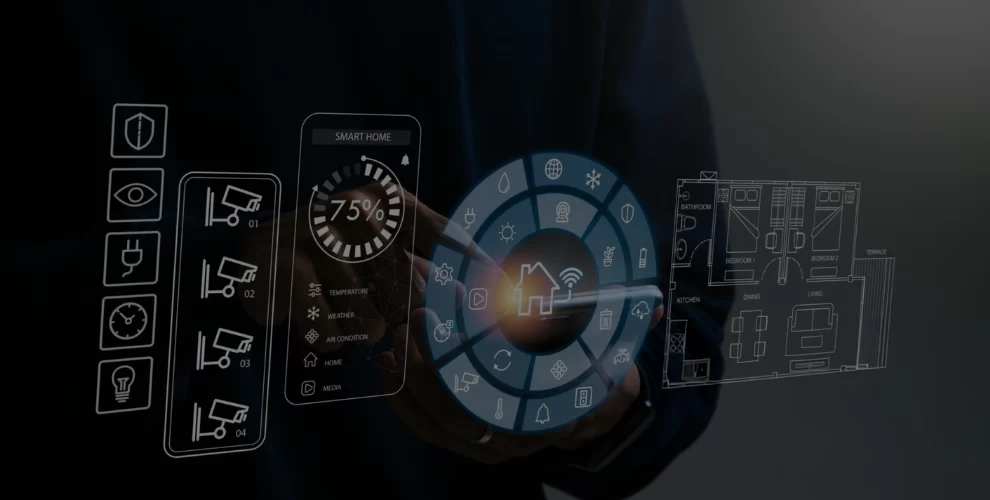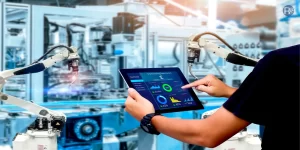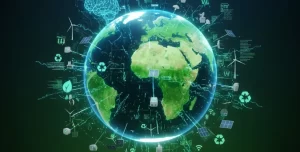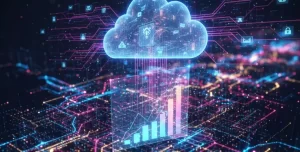
How to Incorporate AI in Your Home for Maximum Energy Savings
Table of Contents
Introduction
Welcome to WikiGlitz! With the advancements in artificial intelligence (AI), homeowners now have access to innovative solutions that can significantly reduce energy consumption and lower utility bills.
This guide will help you understand how to incorporate AI into your home to achieve maximum energy savings.
Key Takeaways
- AI-powered devices optimize energy use, leading to significant cost savings.
- Smart technology integration enhances home comfort and convenience.
- Investing in AI-driven energy solutions promotes a sustainable and eco-friendly lifestyle.
Understanding AI and Energy Efficiency
Definition of AI in the Context of Home Energy Use
Artificial intelligence (AI) refers to the ability of machines to perform tasks that typically require human intelligence, such as learning, reasoning, and problem-solving.
In the context of home energy use, AI-powered devices learn your habits and preferences to optimize energy consumption and enhance efficiency.
Benefits of AI for Energy Management
- Reduced energy consumption: AI devices optimize the use of heating, cooling, lighting, and appliances.
- Cost savings: Lower utility bills due to more efficient energy use.
- Enhanced comfort: AI systems adjust settings to maintain optimal comfort levels while saving energy.
AI-Powered Smart Thermostats
Overview of Smart Thermostats
Smart thermostats learn your schedule and temperature preferences to automatically adjust heating and cooling. This ensures your home is always comfortable while minimizing energy use.
Examples
- Nest Learning Thermostat: Adjusts the temperature based on your daily routine, reducing energy use when you’re not home.
- Ecobee SmartThermostat: Uses room sensors to manage hot and cold spots, ensuring even temperature distribution.
How They Optimize Heating and Cooling
- Learning your schedule: Smart thermostats adjust temperatures when you’re home, asleep, or away.
AI-Driven Lighting Systems
Overview of AI-Driven Lighting Systems
AI-driven lighting systems automatically adjust lighting based on occupancy and natural light, reducing unnecessary energy use.
Examples
- Philips Hue: Smart bulbs that can be controlled remotely and programmed to adjust based on your routine.
- LIFX: Offers vibrant smart lighting with AI integration for energy efficiency.
Benefits of Automated Lighting Control
- Dimming lights when rooms are unoccupied: Saves energy by reducing light usage when not needed.
- Adjusting brightness based on natural light: Optimizes lighting levels to complement natural sunlight.
Smart Plugs and Power Strips
Overview of Smart Plugs and Power Strips
Smart plugs and power strips allow you to control and monitor the power usage of your devices remotely, ensuring they are turned off when not in use.
Examples
- TP-Link Kasa Smart Plug: Provides remote control and scheduling for connected devices.
- Wemo Insight Smart Plug: Monitors energy usage and provides real-time reports.
How They Help Manage Energy Usage
- Prevent energy waste: Turn off devices when they’re not needed.
- Energy consumption insights: Track which devices use the most power and identify opportunities for savings.
AI in HVAC Systems
Overview of AI Integration in HVAC Systems
AI-driven HVAC systems optimize heating, ventilation, and air conditioning by learning your preferences and adjusting settings automatically.
Examples
- Trane ComfortLink II: Integrates with smart home systems to provide efficient temperature control.
- Daikin VRV: Uses AI to optimize energy usage and maintain consistent indoor comfort.
- Optimal temperature maintenance: AI systems adjust HVAC settings to maintain comfort with minimal energy use.
- Reduced wear and tImproving Energy Efficiency with AI
- ear: Efficient operation prolongs the lifespan of HVAC systems.
AI-Enhanced Appliances
Overview of AI-Powered Appliances
AI-powered appliances, such as refrigerators and washing machines, adjust their operation based on usage patterns and external factors, reducing energy consumption.
Examples
- Samsung Family Hub Refrigerator: Manages groceries and energy-efficient cooling using AI.
- LG AI DD Washing Machine: Detects fabric type and load size to optimize wash cycles and save energy.
Energy Savings Through Intelligent Operation
- Customizable operation: AI adjusts settings based on real-time data to maximize efficiency.
- Reduced resource use: Optimized cycles save water and electricity.
Home Energy Management Systems
Overview of AI-Powered Home Energy Management Systems
Home energy management systems monitor and manage energy use throughout your home, providing insights and suggestions for improvement.
Examples
- Sense Energy Monitor: Tracks real-time energy usage and identifies which devices use the most power.
- Schneider Electric Wiser Energy: Provides detailed insights and control over your energy consumption.
Benefits of Comprehensive Energy Monitoring
- Detailed energy usage reports: Understand where your energy is going and how to reduce consumption.
- Real-time monitoring and analysis: Make informed decisions based on current energy use patterns.
Smart Water Heaters
Overview of Smart Water Heaters
Smart water heaters use AI to heat water only when needed, reducing energy consumption and costs.
Examples
- Rheem EcoNet: Allows for remote control and monitoring of water heating.
- AO Smith Voltex: Utilizes a heat pump for efficient water heating.
Reducing Energy Consumption with AI
- On-demand heating: Heat water when it’s needed, reducing standby energy loss.
- Optimized schedules: Adjust heating patterns based on usage trends.
AI in Renewable Energy Integration
Overview of Integrating AI with Home Renewable Energy Systems
AI can optimize the production, storage, and usage of renewable energy sources like solar and wind power in your home.
Examples
- Tesla Solar Roof: Integrates with AI to maximize energy production and efficiency.
- SunPower Equinox: Uses AI to enhance solar energy collection and distribution.
Optimizing Energy Production and Storage
- Predictive analysis: AI predicts energy demand and adjusts supply accordingly.
- Efficient storage management: AI optimizes the use of stored energy to minimize waste.
AI for Energy Consumption Insights
How AI Provides Detailed Energy Usage Reports
AI-powered systems analyze energy usage data to provide detailed reports, helping you identify trends and opportunities for savings.
Benefits of Real-Time Monitoring and Analysis
- Immediate feedback: See the impact of your energy use decisions in real-time.
- Informed decisions: Use data to make adjustments that reduce energy consumption and costs.
Setting Up AI Systems in Your Home
Steps to Install and Configure AI-Powered Devices
- Choose compatible devices: Select AI-powered devices that meet your needs and are compatible with your home systems.
- Follow installation guides: Install devices according to manufacturer instructions.
- Configure settings: Customize settings to match your lifestyle and energy-saving goals.
Tips for Maximizing Their Energy-Saving Potential
- Regular updates: Keep software and firmware updated to ensure optimal performance.
- Monitor usage: Regularly check energy usage reports to identify areas for improvement.
Cost Considerations and ROI
Initial Investment vs. Long-Term Savings
While AI-powered devices may have a higher upfront cost, the long-term savings on utility bills can outweigh the initial investment.
Calculating the Return on Investment for AI Devices
- Energy savings: Estimate the annual savings from reduced energy consumption.
- Payback period: Determine how long it will take for the savings to cover the initial cost of the devices.
Future Trends in AI and Home Energy Savings
Emerging Technologies and Innovations
- Advanced algorithms: Continued development of more efficient AI algorithms.
- Integration with IoT: Greater connectivity and automation through the Internet of Things.
Predictions for the Future of AI in Home Energy Management
- Smarter homes: Increasingly intelligent systems that anticipate your needs and optimize energy use autonomously.
- Greater adoption: More homeowners embracing AI for energy savings and sustainability.
Conclusion
WikiGlitz has brought you this comprehensive guide on incorporating AI into your home for maximum energy savings.
By leveraging AI-powered devices, you can significantly reduce your energy consumption, lower utility bills, and contribute to a more sustainable future. Start integrating AI technology into your home today and experience the benefits of a smarter, more efficient living space.
FAQs
How do AI-powered devices save energy?
AI-powered devices optimize energy use by learning your habits, adjusting settings automatically, and providing real-time insights into energy consumption.
Are AI-powered energy-saving devices expensive?
While the initial cost can be higher, the long-term savings on utility bills often make them a cost-effective investment.
Can AI devices integrate with existing smart home systems?
Yes, many AI-powered devices are designed to be compatible with popular smart home systems, providing seamless integration.
What are the long-term benefits of using AI for energy management?
Long-term benefits include reduced energy bills, lower environmental impact, and increased home comfort and convenience.
How do I choose the right AI-powered device for my needs?
Consider your specific energy-saving goals, budget, and compatibility with existing systems when selecting an AI-powered device.
Want to keep up with our blog?
Our most valuable tips right inside your inbox, once per month.
Error: Contact form not found.
WikiGlitz Team
Welcome to WikiGlitz, your ultimate destination for tech insights and innovation. Our expert team is dedicated to delivering free resources and professional advice on various technology topics, including Artificial Intelligence, Cyber Security, Cloud Computing, and more. We strive to empower our readers with up-to-date information and practical guidance, ensuring you stay ahead in the rapidly evolving tech landscape. At WikiGlitz, we are passionate about making complex technology accessible to everyone. Our team of seasoned experts curates content that is both informative and engaging, helping you understand and leverage the latest tech trends. Whether you're a tech enthusiast or a professional, WikiGlitz is your go-to source for reliable, expert-driven content. Join us on this journey to explore and embrace the future of technology.





